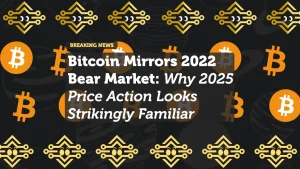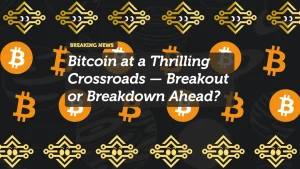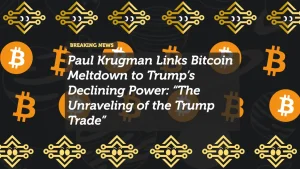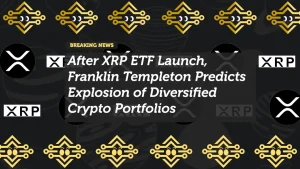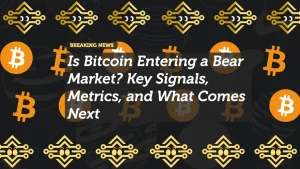
Bitcoin Whales Sell as Put Options Surge in ‘Two-Way, Headline-Driven Market’
Bitcoin (BTC) markets are flashing mixed signals this week as whale selling intensifies and put option demand spikes, underscoring what analysts describe as a “two-way, headline-driven market.” The trend comes amid renewed uncertainty over monetary policy, ETF fund flows, and geopolitical tensions — all of which are shaping traders’ risk appetite.
Whales Resume Profit-Taking as BTC Struggles Near $114K
On-chain data from CryptoQuant shows that large Bitcoin holders — wallets holding more than 1,000 BTC — have accelerated their selling activity since Friday. Roughly $1.2 billion worth of BTC has been transferred to exchanges over the last 72 hours, marking the largest whale-driven inflow since August.
Analysts interpret this as a sign of short-term profit-taking, especially as Bitcoin hovers near its psychological ceiling around $114,000–$115,000.
“Whales are rebalancing risk while liquidity remains high,” said Ki Young Ju, CEO of CryptoQuant. “This pattern often signals the end of a micro-rally but not necessarily the start of a broader downturn.”
At the same time, Bitcoin’s exchange reserves have risen by nearly 1.7%, reversing a month-long decline. Historically, such upticks tend to precede short-term corrections as selling pressure builds.
Put Option Demand Surges as Traders Hedge Exposure
The derivatives market is confirming that institutional traders are turning cautious. Data from Deribit shows a sharp increase in open interest for put options — contracts that give holders the right to sell BTC at a specific price — indicating that investors are paying a premium to hedge against downside risk.
Put-call ratios rose above 0.73, their highest level in two months, while implied volatility climbed 6% week-over-week.
“This is a defensive stance,” noted Vetle Lunde, senior analyst at K33 Research. “Traders are not necessarily bearish on Bitcoin long term, but they’re clearly bracing for headline shocks in the short term.”
Among the catalysts driving hedging demand are Federal Reserve comments, ongoing ETF flow volatility, and lingering concerns about new U.S. tariff policies announced earlier this month.
A ‘Two-Way Market’ Defined by Headlines
Market strategists say Bitcoin has entered a “two-way phase” — a structure defined by alternating bullish and bearish catalysts that push prices back and forth in tight ranges.
Recent headlines about ETF inflows, rate-cut expectations, and macro data surprises have driven sharp intraday swings, with BTC’s daily range now averaging $3,000 — the widest since July.
“Every data point and Fed remark is moving the needle,” said Katie Stockton of Fairlead Strategies. “It’s not purely technical anymore — it’s narrative-driven.”
This choppy structure has made trading conditions more complex. While retail traders continue to accumulate on dips, professional desks are increasingly using options spreads to manage exposure.
Whale Selling May Not Spell Doom
Despite the rising caution, not all analysts view whale activity as a red flag.
Historically, whale distributions often accompany periods of market rotation, where long-term holders sell into strength and new entrants absorb supply.
Glassnode’s latest data supports this theory, showing that the percentage of young coins (<3 months old) on the network has risen steadily, indicating active re-accumulation.
“The broader market remains constructive,” said Julio Moreno, Glassnode’s head of research. “We’re seeing capital rotation — not a mass exodus.”
This perspective aligns with the liquidity narrative emerging from macro circles: as the Fed nears the end of quantitative tightening, Bitcoin could still benefit from an improving liquidity backdrop later this quarter.
Market Outlook: Neutral to Cautiously Bullish
Technically, Bitcoin remains above its 50-day moving average, with support near $110,500 and resistance at $115,800. A confirmed breakout above the upper band could signal renewed upside toward $120,000, while a close below $110,000 might open a path to $106,500.
Options data also show heavy activity at the $120,000 call strike, suggesting traders expect volatility expansion rather than sustained decline.
Meanwhile, institutional products continue to post mixed ETF flows — with Grayscale’s GBTC seeing mild outflows offset by net inflows to BlackRock’s iShares Bitcoin ETF, which now holds over 800,000 BTC after a $4 billion inflow streak.
Conclusion
The interplay of whale selling and surging put demand paints a picture of a market at equilibrium — cautious but not panicked, headline-driven but fundamentally resilient.
While short-term volatility may persist as traders hedge for macro risk, analysts agree that the medium-term structure remains supportive for Bitcoin, particularly if liquidity conditions ease and institutional flows resume.
For now, the market is two-way and reactive, but as past cycles have shown, it only takes one decisive catalyst — policy pivot, ETF momentum, or macro surprise — to tilt Bitcoin’s balance once again toward the bulls.











